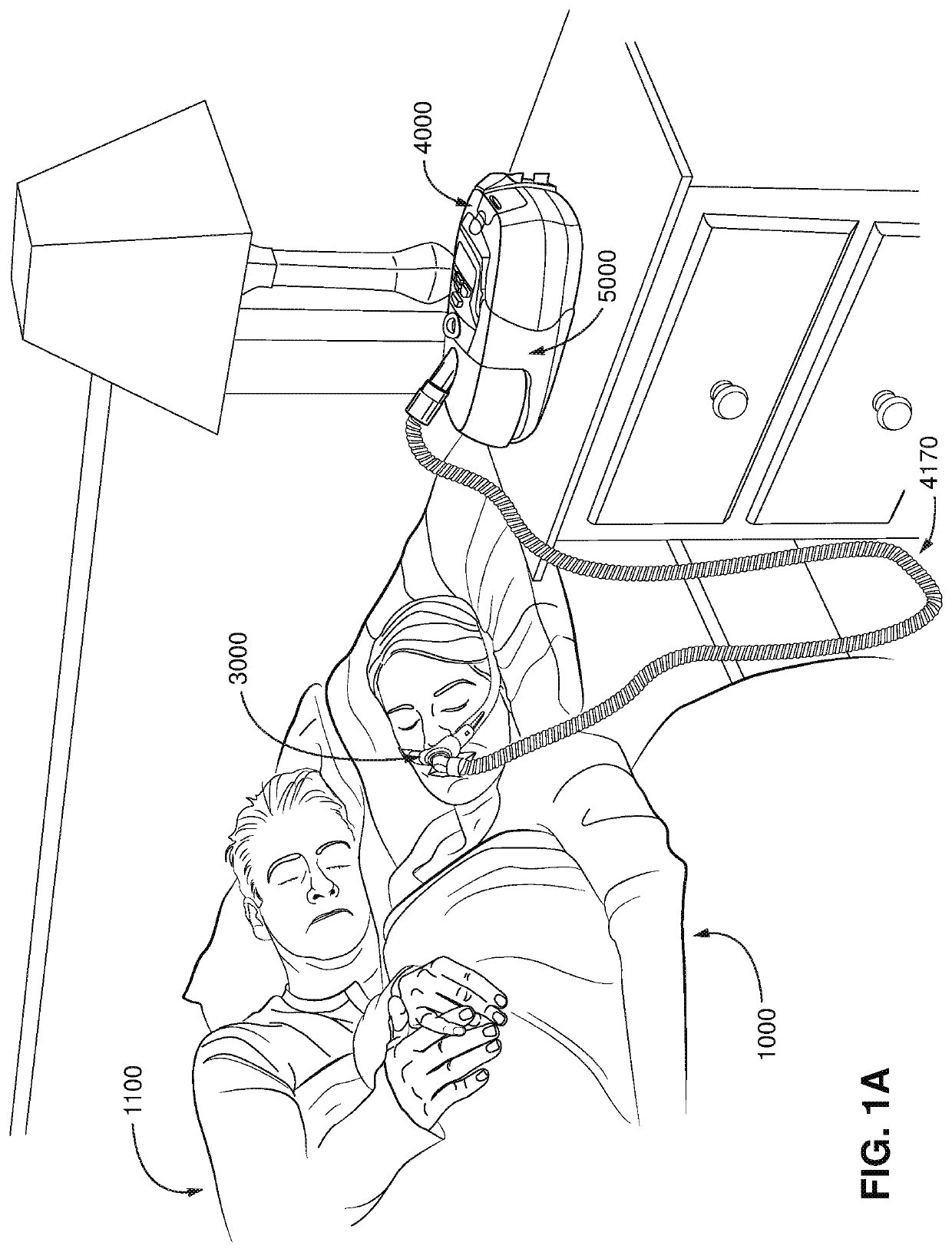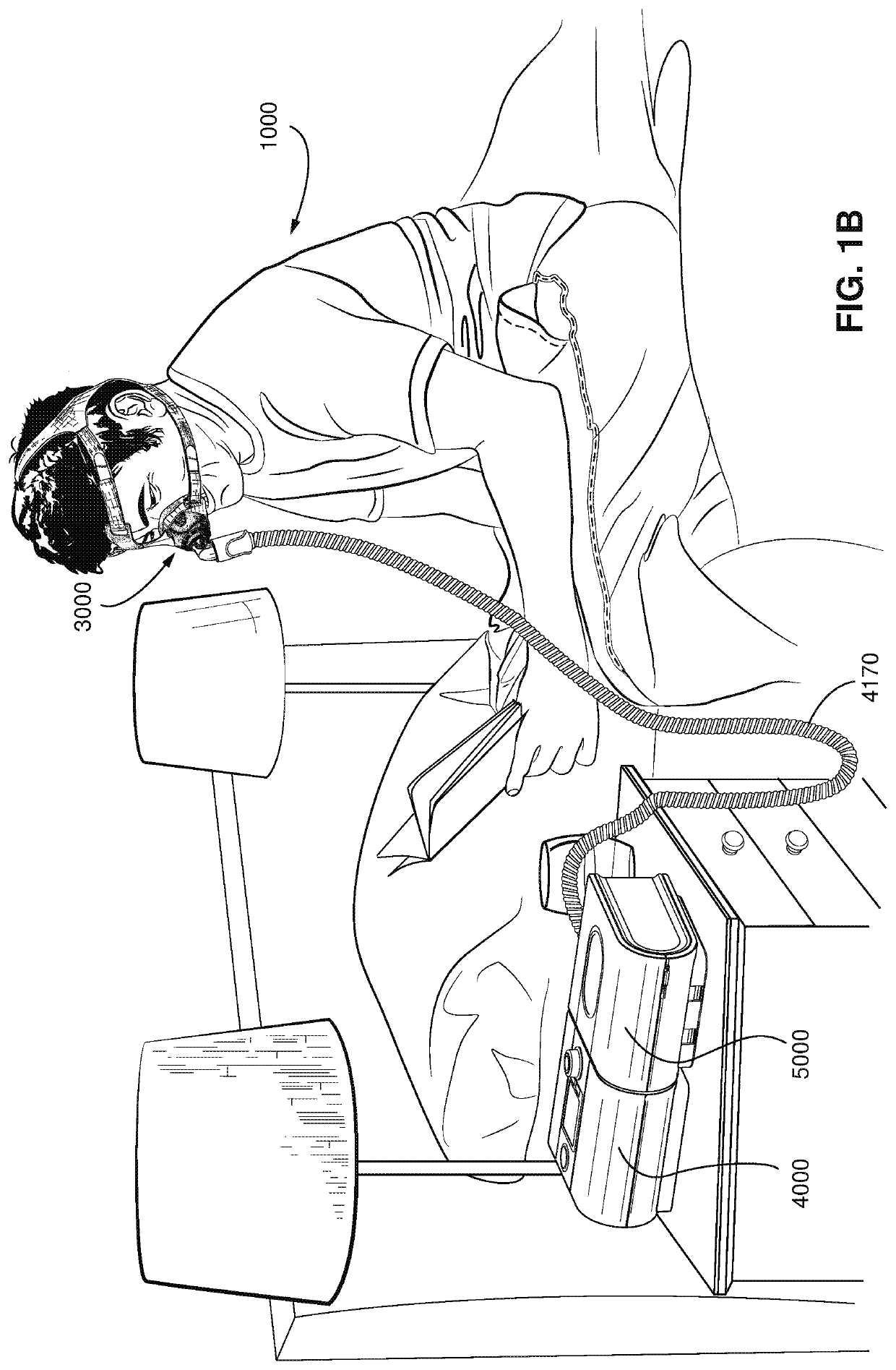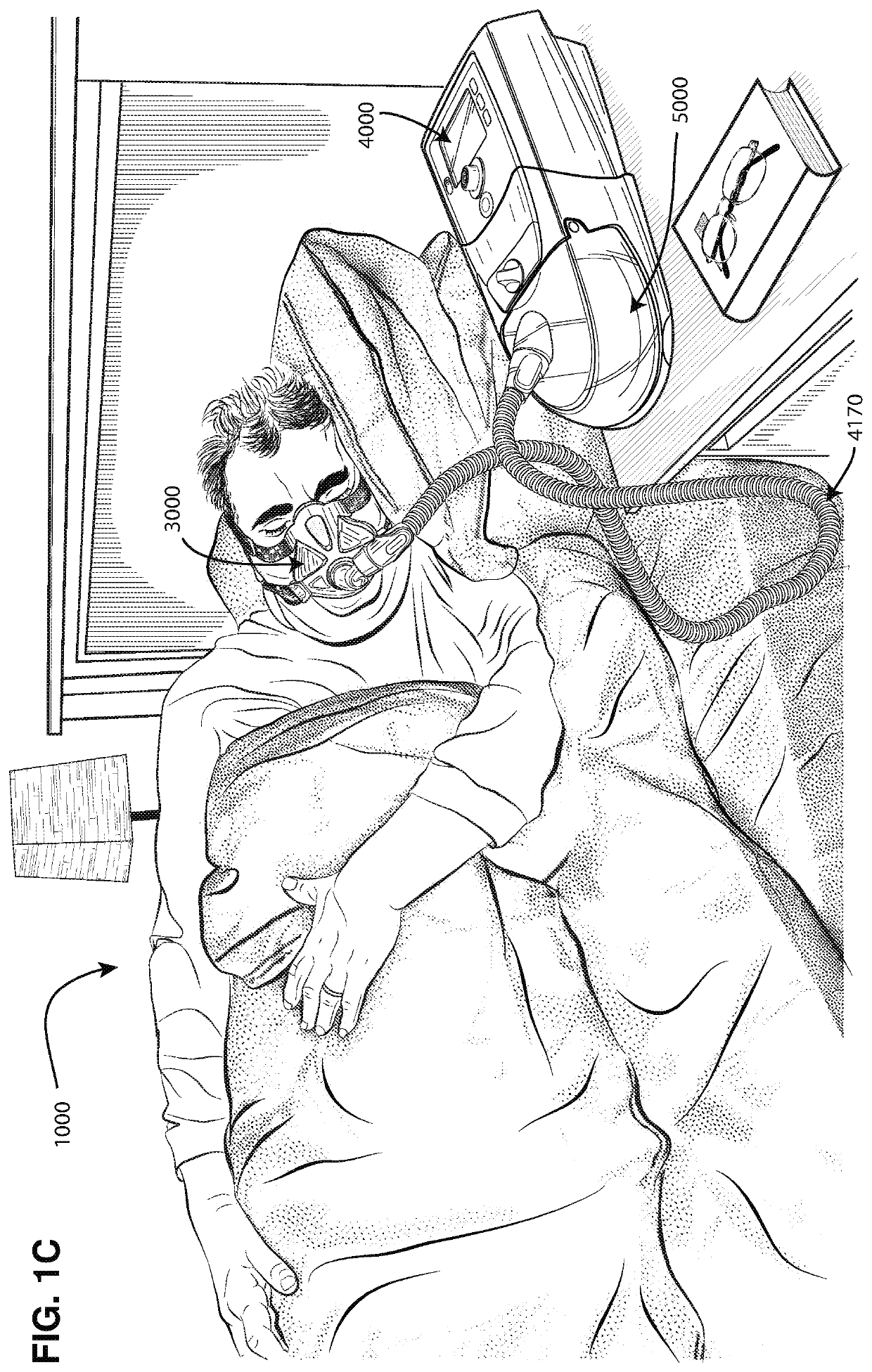Treatment of OSA by CPAP therapy may be voluntary, and hence patients may elect not to comply with therapy if they find devices used to provide such therapy one or more of: uncomfortable, difficult to use, expensive and aesthetically unappealing.
For other forms of therapy, such as the delivery of
oxygen, the patient interface may not include a seal sufficient to facilitate delivery to the airways of a supply of gas at a
positive pressure of about 10 cmH2O.
Certain other
mask systems may be functionally unsuitable for the present field.
For example, purely ornamental masks may be unable to maintain a suitable pressure.
Mask systems used for
underwater swimming or diving may be configured to guard against ingress of water from an external higher pressure, but not to maintain air internally at a higher pressure than ambient.
Certain masks may be clinically unfavourable for the present technology e.g. if they block
airflow via the
nose and only allow it via the mouth.
Certain masks may be uncomfortable or impractical for the present technology if they require a patient to insert a portion of a
mask structure in their mouth to create and maintain a seal via their lips.
Certain masks may be impractical for use while sleeping, e.g. for sleeping while
lying on one's side in
bed with a head on a pillow.
The design of a patient interface presents a number of challenges.
As a consequence of these challenges, some masks suffer from being one or more of obtrusive, aesthetically undesirable, costly, poorly fitting, difficult to use, and uncomfortable especially when worn for long periods of time or when a patient is unfamiliar with a
system.
Wrongly sized masks can give rise to reduced compliance, reduced comfort and poorer patient outcomes.
Masks designed solely for aviators, masks designed as part of
personal protection equipment (e.g. filter masks), SCUBA masks, or for the administration of anaesthetics may be tolerable for their
original application, but nevertheless such masks may be undesirably uncomfortable to be worn for extended periods of time, e.g., several hours.
This discomfort may lead to a reduction
in patient compliance with therapy.
If a
mask is uncomfortable, or difficult to use a patient may not comply with therapy.
Since it is often recommended that a patient regularly wash their mask, if a mask is difficult to clean (e.g., difficult to assemble or disassemble), patients may not clean their mask and this may
impact on
patient compliance.
A seal-forming structure that may be effective in one region of a patient's face may be inappropriate in another region, e.g. because of the different shape, structure, variability and sensitivity regions of the patient's face.
For example, a seal on swimming goggles that overlays a patient's
forehead may not be appropriate to use on a patient's
nose.
Like the previous style of seal forming portion, if the match between the face and the mask is not good, additional force may be required to achieve a seal, or the mask may leak.
Furthermore, if the shape of the seal-forming structure does not match that of the patient, it may crease or buckle in use, giving rise to leaks.
Another type of seal-forming structure may comprise a friction-fit element, e.g. for
insertion into a naris, however some patients find these uncomfortable.
Some patients may find it inconvenient to constantly apply and remove an
adhesive to their face.
However, the use of adhesives may be uncomfortable for some.
Many such harnesses suffer from being one or more of ill-fitting, bulky, uncomfortable and awkward to use.
However, the user may need to schedule an appointment with and travel to a facility that has the equipment and personnel to make such an assessment.
Such scheduling and travel may be inconvenient for the user, and may dissuade the user from obtaining a patient interface suited to them.
However similar drawbacks and challenges may apply to designing and manufacturing any article, apparatus or other apparel that may be worn on a person's head or face.
For instance, if a user wishes to order custom-fit sunglasses, goggles, a face mask, or costume, the user may be inconvenienced to have to pay and / or travel in order to be assessed.
 Login to View More
Login to View More  Login to View More
Login to View More 









